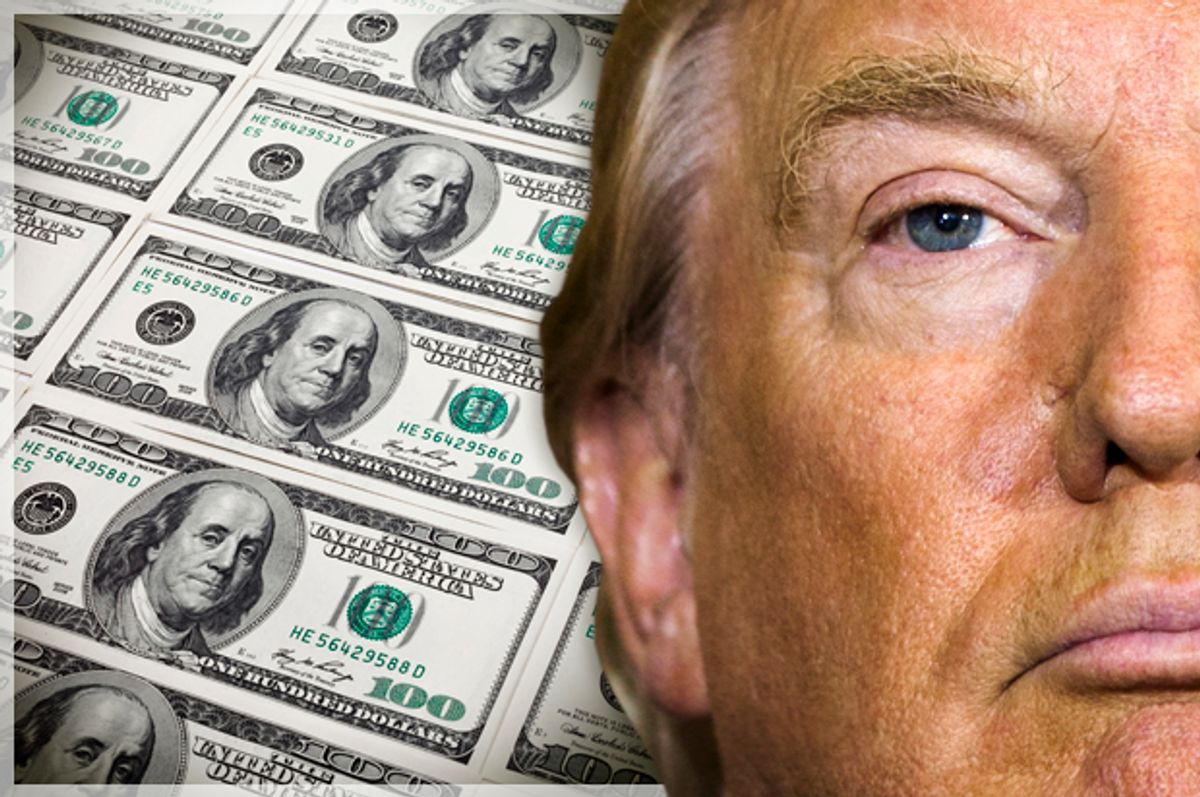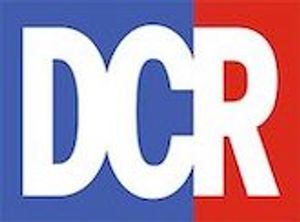The $1 trillion coronavirus relief package Congress passed won't come close to making up for the damage caused by COVID-19 and the Trump administration's lethal dawdling.
We need the government to act or we could fall into a depression rivaling the 1930s.
An 18-month crisis is widely expected. The Trump administration plan is for 18 months. That implies $5 trillion based on my calculations.
The ultimate cost of this novel virus is likely to be north of $7 trillion, assuming this pandemic endures for two years, as German public health officials warn.
Even if we put the pandemic behind us in just 12 months by finding and distributing an effective vaccine, the economic damage will run about $3.3 trillion. My calculations from the official economic reports also show in one year about a 15% decline in the Gross Domestic Product.
My estimates are more conservative than those of Goldman Sachs economists, who project a terrifying 24% drop in the national economy in April through June. If that severe contraction persists it quickly would produce a nightmare right out of the 1930s because for the last four decades Congress has been gnawing at what remains of the New Deal era social safety net.
Goldman optimistically projects a sharp, brief, drop followed by a sharp economic upturn starting in July. I don't see that as realistic because until we have a cure allowing people to gather at work or for fun will spread the virus.
My one-year cost estimate would mean increasing federal spending this year from an expected $4.8 trillion to $8 trillion. More than half that money would be borrowed, quadrupling the shortfall between tax revenues and spending, known as the annual budget deficit.
Why we're reporting these numbers
Estimating the costs in broad strokes is not all that hard for anyone who understands the principles of accounting identities, economics, and public finance.
So why haven't journalists at major publications provided anything as understandable as the numbers above? Journalists usually wait for someone in authority to make a declaration which they can quote. This administration hasn't done that. Many finance journalists also don't know about the accounting identities used to calculate national income or how to make calculations.
Last week, DCReport was the first to publish the numbers of infections and deaths expected by a wide range of public health experts. Two days later reports appeared confirming our reporting.
Much more pain
It's important to understand that if we don't spend as much as it takes to make up for the loss of wages and profits, the result could be far worse economic harm. America could be in economic pain long after COVID-19 becomes history if Congress and Donald Trump act as cheapskates.
The Great Recession officially ended in June 2009, but for more than a decade the American labor market suffered along with growth in domestic capital investment, which is crucial to creating new jobs.
That was because stingy lawmakers, mostly Republicans but some Democrats, refused to enact the full stimulus package former President Barack Obama's economic advisers sought using the same economic principles as I.
Then, at the behest of Republicans, 40% of the Obama stimulus was foolishly wasted on business tax cuts. These are inherently savings, instead of direct spending.
Trump seeks cuts in food, healthcare
The Trump administration and Congressional Republicans continue to seek cuts in food stamps and health care for children, as DCReport keeps advising readers.
The need for government spending to keep the economy from collapsing is much bigger now because this is not a self-inflicted wound in one area of the economy, unsound mortgages. It is a general collapse of economic activity as people are directed to stay home to prevent a 21st Century Black Death. In the worst case, it could kill eight million of us, in good part because Trump delayed for weeks increased production of medical safety equipment and ventilators.
$10,000 per each American
Trillions and billions are huge, virtually unimaginable numbers, so let's give some perspective. Consider a $3.3 trillion coronavirus tab for a one-year pandemic. That's more than $10,000 per American; $40,000 for a family of four.
That cost also would be more than twice the money our federal government plans to spend this budget year on the military, veterans, education, federal law enforcement, the Centers for Disease Control, NASA, all cabinet agencies and other federal operations considered discretionary because Congress can alter spending as it chooses.
Trump's team projected $1.8 trillion in individual income taxes or about $5,400 per American. In addition, corporate profits taxes were expected to generate $265 billion.
Back when Trump was claiming the first 15 coronavirus cases would quickly fall to zero his administration projected revenues of all kinds would fall $1 trillion short of total federal spending. That shortfall is about $3,000 per American.
Record job losses
Income tax revenues are about to collapse as work disappears for perhaps 30 million Americans. Corporate profits overall are going to plunge, too. That means the actual shortfall in tax revenues will be much worse than Team Trump anticipated.
Already it's clear that job losses will be several times worse than during the worst of the Great Recession. The weekly record for initial jobless benefits claims was set in March 2009 at just under 700,000.
Last week about three million people made initial claims for jobless benefits, according to Merrill Lynch economists. Goldman Sachs estimated 2.25 million claims. The data will be out Thursday, March 26, though the Trump administration has asked states to temporarily suppress this information.
As jobs vanish and business sales plummet it creates a vicious downward spiral in which the economy shrinks and shrinks again.
What would it mean if unemployment hits 20%, a widely discussed and perhaps conservative number?
One-in-five workers fired
American workers earn more than $150 billion a week. If every fifth worker loses their paycheck it would mean about $30 billion a week in wages vanish. Were that split equally among all workers it would mean getting paid only for Monday through Thursday.
That's more than $1.5 trillion of lost wages for a year, more than the entire discretionary federal budget for the military, FBI, etc.
Then there is the multiplier effect, so beloved by companies extracting corporate welfare from state and local governments. When workers spend, jobs are created for everyone from airline pilots and cooks to oil well roughnecks and hardware store clerks. But when spending falls those workers get laid off.
A loss of $1.5 trillion in wages implies at least $300 billion more in damage, a very conservative number. If the lost wages were in manufacturing the broader impact could mean the loss of other jobs paying perhaps seven times as much.
CEOs panic
If you think these numbers are scaremongering, consider the behavior of top executives at America's major corporations, who are well paid for their exquisite expertise in how to husband and deploy capital. Their behavior shows panic.
Every cent on credit lines of airlines, carmakers, lodging companies, and others has been drawn down, making the borrowing companies flush with cash. Fearing that they would be unable to fund this borrowing, all eight Too Big to Fail Banks last week stopped buybacks of their own shares.
Ford Motor borrowed $15.4 billion, the total available on its credit lines. It also canceled its dividend to shareholders to conserve cash and it shut down vehicle production.
Last week the Big Three U.S. automakers sent 150,000 workers home last week, partly at the urging of the United Auto Workers, which feared members would develop coronavirus.
Meager unemployment benefits
Jobless benefits, using up vacation and sick pay will blunt the overall economic damage from lost wages, but only for a short while. Unless Congress acts, jobless benefits will last no more than six months. And those benefits are meager, as little as $45 a week in Alabama.
People living paycheck-to-paycheck will face eviction unless our government steps in, as New York state has for 90 days. But what of landlords, many with properties burdened with mortgages that must be paid each month?
More troubling, a majority of workers don't qualify for jobless benefits under existing law; in Florida only one in eight applicants collect unemployment checks, as we reported earlier. The reason: Employers lobbied for laws that limit their costs.
Economy built on leverage
Because we have built an economy that discourages savings and favors borrowing, also known as leverage, many firms are not prepared for a significant drop in revenue.
The airline industry is demanding an immediate $58 billion in welfare, half in cash, half in zero-interest loans. Otherwise, the airlines threaten "draconian measures." United Airlines has suggested it will furlough more than 50,000 of its 88,000 employees unless Congress submits to its cash demands by next week.
So how does anyone have any idea how much stimulus is needed to keep our economy from collapse? The answer is accounting identities, the simple algebra of national income accounting.
Doing the GDP math
Just as 2+2 must equal 4, the rules of accounting identities give us the Gross Domestic Product or GDP.
Our situation is as if we had an economy with two apples and two oranges, but then one orange soured. That means 2+1=3. And that means, assuming the population remains the same, that on average incomes must fall by 25%.
When wages and investment fall, then the economy, the Gross Domestic Product, must fall, leaving us overall worse off.
However, the government could offset this with increased spending to make up for the fall. Since our constitution gives our government a monopoly on the currency, it can create and spend all the money it wants and never go broke, though over time such spending could have very adverse consequences for us as individuals.
Trump businesses hit hard
Income from wages and profits and interest on investments are all about to fall by 20% or more, I estimate. Some industries will see virtually all of their revenue dry up.
The golf, hotel and restaurant businesses of Donald Trump will be hard hit. As DCReport revealed last week, investors in Trump's second-largest lender, Ladder Capital, have driven the value of that tiny firm's shares down, now off 76%, more than double the overall decline in the market.
In such a troubled economy, total new business investment will fall by as much as a 33%, a $2 trillion decline. The Great Recession fall was about 25%.
And among people who keep their jobs, or can live off investments and benefits such as pensions and Social Security, spending will decline because people can't engage in many activities that cost money. Also, many will hoard cash.
As I said, my calculations are conservative, assuming a 15% drop in economic activity over the next 12 months driven by the loss of 30 million jobs.
If the crisis continues for a second year, the situation would worsen somewhat. As more jobs are lost and many highly leveraged businesses, from smalltime landlords to airlines, are forced to seek refuge in federal bankruptcy court, lenders and vendors would take further losses.
But we can avoid that by sending cash to people through Congressional spending. Putting cash directly in individual pockets will, as our Constitution says, "promote the general welfare."




Shares